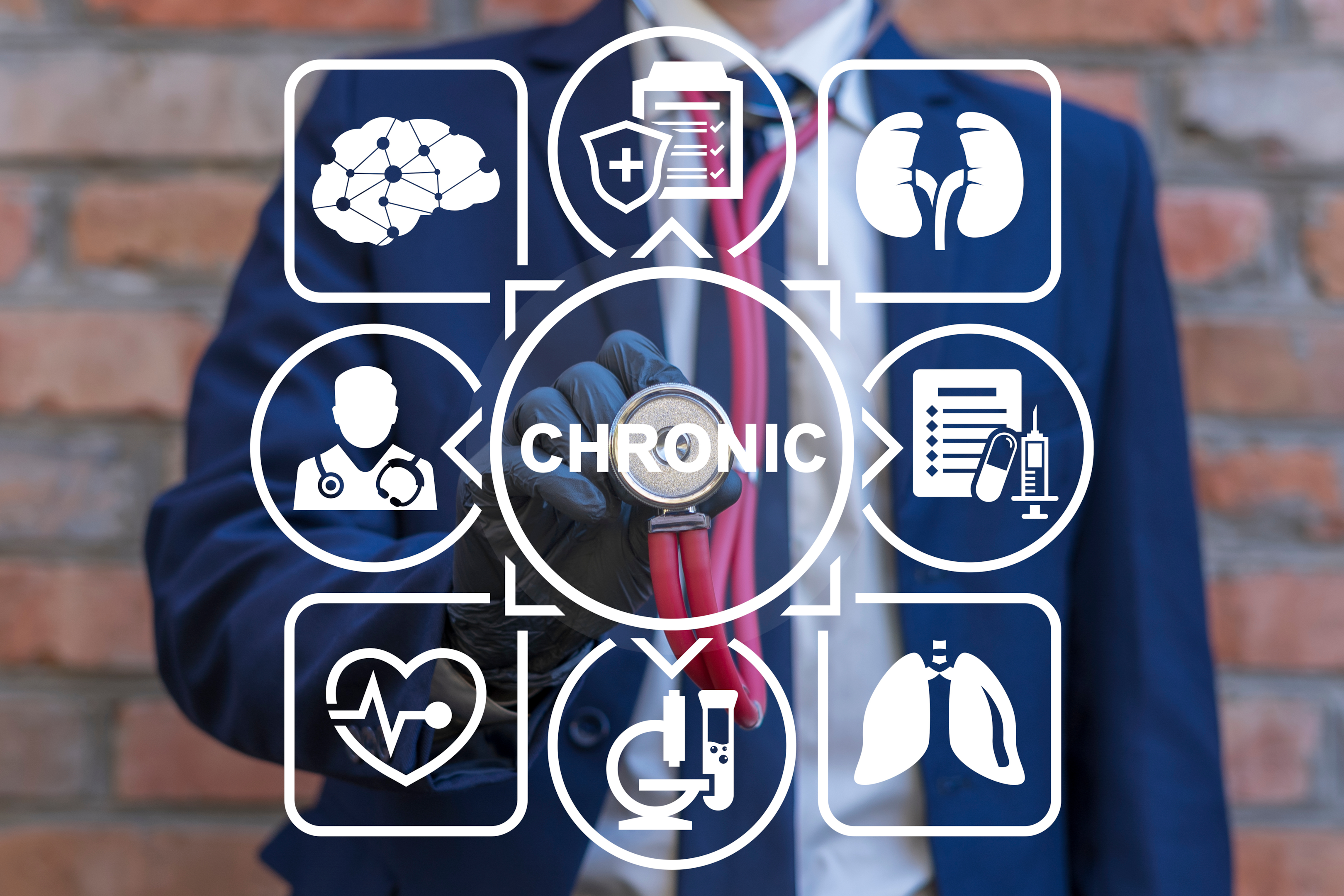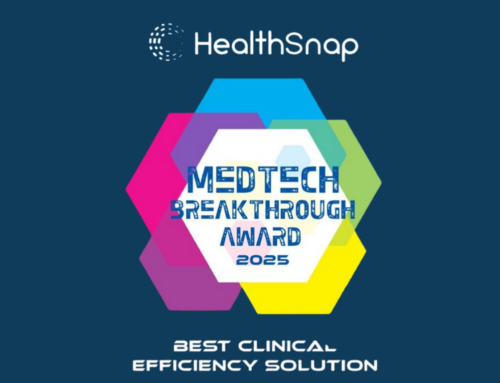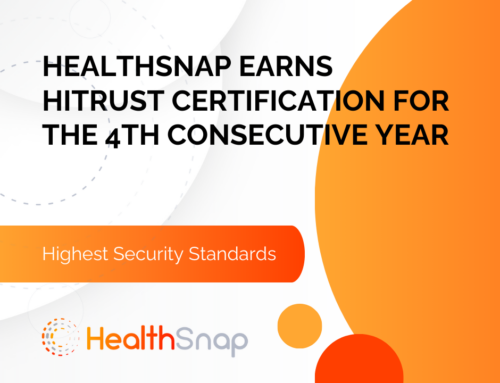Virtual care management programs have become increasingly important in today’s healthcare landscape, especially in light of technological advancements in recent years and the ongoing challenges posed by chronic diseases and an aging population. These programs, like Remote Patient Monitoring (RPM), leverage technology to provide a more continuous, proactive approach to care, significantly enhancing patient wellness.
Enhanced Accessibility and Convenience
Virtual care management programs revolutionize healthcare delivery by significantly enhancing accessibility and convenience for patients. These programs utilize advanced technology to bridge the gap between patients and healthcare providers, making high-quality care more readily available.
Accessibility for Patients with Mobility Issues
For patients with mobility challenges, traditional healthcare visits can be arduous and sometimes even impossible. Virtual care management such as Remote Patient Monitoring (RPM) and Chronic Care Management (CCM) programs eliminate the need for frequent in-person visits, allowing these patients to receive consistent and comprehensive care from the comfort of their own homes. This approach not only saves time and effort but also reduces the physical and emotional strain associated with traveling to healthcare facilities.
Reach in Remote Areas
Patients living in rural or remote areas often face significant barriers to accessing quality healthcare, including long travel distances to the nearest healthcare facility and a shortage of local medical professionals. Virtual care management programs help overcome these obstacles by providing telehealth services and remote monitoring capabilities. Through virtual consultations and Remote Patient Monitoring (RPM), patients can connect with healthcare providers regardless of geographic limitations. This connectivity ensures that patients receive timely medical attention and continuous care, which are crucial for managing chronic conditions and preventing complications.

Virtual Consultations
Virtual consultations are a cornerstone of virtual care management programs. These consultations enable patients to interact with healthcare providers via video calls, phone calls, or secure messaging platforms. The convenience of virtual consultations means that patients can schedule appointments that fit their schedules without the need for travel. Virtual consultations also facilitate quicker access to medical advice, which can lead to earlier diagnosis and intervention.
Remote Patient Monitoring
Remote Patient Monitoring (RPM) is a critical component of virtual care management. Patients can use wearable devices and other monitoring tools to track vital signs and health metrics, such as blood pressure, glucose levels, heart rate, and more. This data is transmitted in near real-time to healthcare providers, allowing for continuous monitoring and immediate response to any abnormalities. Remote monitoring ensures that healthcare providers can keep a close watch on patients’ health status, adjust treatment plans as necessary, and intervene early to potentially prevent exacerbations of chronic conditions.
Telehealth Services
Telehealth services extend beyond consultations and monitoring to include various aspects of healthcare delivery. These services can encompass virtual check-ins, remote therapy sessions, digital health education, and more. Telehealth platforms provide a comprehensive suite of tools that enable healthcare providers to deliver holistic care remotely. This broad range of services ensures that patients have access to the care they need without the logistical challenges associated with traditional healthcare visits.
Impact on Patient Outcomes
The increased accessibility and convenience provided by virtual care management programs lead to significant improvements in patient outcomes. By removing barriers to care, these programs ensure that patients receive consistent and timely medical attention. This continuous engagement with healthcare providers helps in the effective management of chronic conditions, reducing the risk of complications and hospitalizations.
Case Study: Remote Patient Monitoring for Elderly Patients
A compelling example of the benefits of enhanced accessibility and convenience through virtual care management is found in a study published in the Journal of the American Geriatrics Society. This study focused on the impact of remote monitoring on elderly patients, a demographic particularly vulnerable to chronic conditions and mobility issues.
Study Overview
The study involved elderly patients enrolled in a remote monitoring program, where their vital signs and health metrics were continuously tracked using wearable devices and remote monitoring tools. Healthcare providers received real-time data, enabling them to monitor patients’ health status closely and intervene early when necessary.
Key Findings
-
Reduced Hospital Admissions: The study found a significant reduction in hospital admissions among the elderly patients participating in the remote monitoring program. Continuous monitoring allowed healthcare providers to detect early signs of deterioration and address them promptly, preventing the need for hospitalization.
-
Decreased Emergency Department Visits: There was also a marked decrease in emergency department visits. The ability to manage health issues proactively through remote monitoring reduced the incidence of acute exacerbations that typically lead to emergency care.
-
Improved Patient Wellness: Patients reported feeling more secure and supported, knowing that their health was being continuously monitored. This reassurance contributed to improved mental and emotional well-being, which is crucial for overall health.
-
Cost Savings: The reduction in hospital admissions and emergency department visits translated into significant cost savings for both patients and the healthcare system. Early intervention and continuous care are far more cost-effective than treating advanced stages of chronic conditions.
Continuous and Proactive Care
Continuous Monitoring
Ongoing monitoring is at the heart of virtual care management programs. Wearable devices collect a range of health metrics, including heart rate, blood pressure, glucose levels, and physical activity. These devices transmit data in near real-time to healthcare providers, who can then monitor their patients’ health continuously without the need for frequent in-person visits.
-
Vital Signs Tracking: Devices continuously track vital signs, alerting healthcare providers to any irregularities. For example, a sudden spike in blood pressure or a drop in heart rate can be immediately flagged, allowing for quick response and adjustment of treatment plans.
-
Medication Adherence: Wearable devices and connected apps can remind patients to take their medications and track adherence. Non-adherence can be detected early, prompting healthcare providers to engage with the patient to understand and resolve the issue.
-
Health Indicators: Other indicators such as sleep patterns, physical activity, and weight can also be monitored. These metrics provide a holistic view of a patient’s health, enabling more comprehensive care management.
Proactive Care Management
The continuous flow of data from remote monitoring devices allows for a proactive approach to healthcare. Instead of reacting to health issues after they occur, healthcare providers can anticipate problems and intervene early.
-
Timely Interventions: Real-time data enables healthcare providers to detect early signs of deterioration or complications. For example, if a patient with heart disease shows signs of an impending cardiac event, providers can intervene promptly, potentially preventing a heart attack.
-
Personalized Care Plans: Continuous monitoring allows for the customization of care plans based on up-to-date information. Treatment can be adjusted dynamically to better meet the patient’s needs, improving the effectiveness of care.
-
Preventive Measures: Proactive care includes educating patients about lifestyle changes and preventive measures that can reduce the risk of complications. Continuous engagement with patients encourages adherence to these measures, further enhancing health outcomes.
Example: Managing Chronic Conditions

Patients with chronic conditions such as diabetes, hypertension, heart disease, and chronic obstructive pulmonary disease stand to benefit immensely from continuous and proactive care facilitated by virtual care management programs. A notable example is the management of diabetes through remote patient monitoring (RPM).
Diabetes Management
A study published in NPJ Digital Medicine demonstrated the effectiveness of remote patient monitoring in managing blood glucose levels in diabetic patients. The study found that continuous monitoring and timely interventions led to better glycemic control, reducing the risk of complications such as diabetic ketoacidosis and hypoglycemia.
-
Improved Glycemic Control: Continuous monitoring allows for the precise tracking of blood glucose levels. Healthcare providers can detect patterns and make real-time adjustments to insulin therapy, diet, and exercise plans.
-
Reduction in Complications: Proactive management helps prevent acute complications by addressing issues before they become severe. For example, early detection of high blood sugar levels can prompt dietary adjustments or medication changes to bring levels back to normal.
-
Enhanced Patient Engagement: Continuous monitoring tools often come with features that engage patients in their care. Patients receive immediate feedback on their health data, empowering them to make informed decisions about their lifestyle and treatment.
Hypertension Management
For patients with hypertension, continuous blood pressure monitoring can lead to better management of the condition and prevent complications such as stroke and heart attack.
-
Near Real-time Blood Pressure Tracking: Wearable devices monitor blood pressure throughout the day, providing a detailed picture of how it fluctuates. This data helps healthcare providers fine-tune antihypertensive therapy.
-
Early Detection of Hypertensive Crises: Timely alerts for high blood pressure readings via RPM blood pressure monitors enable swift intervention regarding the patient’s blood pressure fluctuations, reducing the risk of hypertensive emergencies.
-
Lifestyle Modifications: Continuous monitoring supports lifestyle interventions such as dietary changes and physical activity, which are crucial for managing hypertension.
Heart Disease Management
Patients with heart disease benefit from continuous monitoring of cardiac health indicators, which can help prevent heart attacks and other serious complications.
-
Monitoring Cardiac Metrics: Devices that track heart rate, rhythm, blood pressure, and other cardiac metrics can identify early signs of cardiac distress. Providers can intervene early, potentially preventing severe events.
-
Medication Management: Continuous data allows for better management of medications such as beta-blockers and anticoagulants, ensuring optimal dosing and adherence.
-
Patient Education: Continuous engagement provides opportunities to educate patients about recognizing symptoms and managing their condition, improving their ability to self-care.
Improved Patient Engagement
Patient engagement is a cornerstone of effective healthcare management, and virtual care management programs significantly enhance this aspect by leveraging technology to foster a more interactive and informed patient experience.
Educational Resources
Virtual care management programs offer a wealth of educational resources tailored to individual patient needs. These resources include:
-
Personalized Health Information: Patients receive information that is specific to their health conditions, helping them understand their diagnosis, treatment options, and the importance of following their care plans.
-
Condition-Specific Content: Educational materials are often tailored to particular chronic conditions, such as diabetes, hypertension, or heart disease. This targeted approach ensures that patients get the most relevant information to manage their specific health issues.
-
Interactive Learning Tools: Programs may include videos, quizzes, and interactive modules that make learning about health conditions and treatments more engaging and easier to understand.
Regular Updates
Continuous communication through regular updates keeps patients informed about their health status and any necessary adjustments to their care plans. These updates can include:
-
Progress Reports: Patients receive regular reports on their health metrics, such as blood glucose levels, blood pressure readings, and weight changes. These reports help them see their progress and understand the impact of their actions on their health.
-
Appointment Reminders: Automated reminders for appointments, medication refills, and other healthcare activities ensure that patients stay on track with their care schedules.
-
Health Tips: Periodic tips and advice related to diet, exercise, and lifestyle changes support patients in making healthier choices.
Interactive Communication Tools
Interactive tools facilitate better communication between patients and healthcare providers, making it easier to manage health concerns and receive timely support. These tools include:
-
Telehealth Consultations: Virtual visits with healthcare providers allow patients to discuss their health concerns and receive medical advice without the need for in-person appointments. This convenience is particularly beneficial for those with mobility issues or those living in remote areas.
-
Messaging Systems: Secure messaging platforms enable patients to communicate with their care team at any time, ask questions, and receive prompt responses.
-
Feedback Mechanisms: Patients can provide feedback on their care experience, which helps healthcare providers improve service quality and address any concerns promptly.
Empowerment and Motivation
By equipping patients with the knowledge and tools they need to manage their health, virtual care management programs foster a sense of empowerment and motivation. This active involvement in their own care leads to:
-
Better Adherence to Treatment Plans: When patients understand the importance of their treatment plans and feel supported in following them, adherence rates improve. This results in better health outcomes and reduced complications.
-
Healthier Lifestyle Choices: Educated and engaged patients are more likely to make positive lifestyle changes, such as improving their diet, increasing physical activity, and quitting smoking.
-
Increased Satisfaction: Patients who feel actively involved in their care are more satisfied with their healthcare experience, which can lead to better overall health and well-being.
Example: HealthSnap’s Virtual Care Platform
HealthSnap’s virtual care platform exemplifies how technology can enhance patient engagement. This integrated approach to patient engagement includes:
-
Personalized Health Plans: The HealthSnap platform provides customized health plans based on specific conditions and needs of patients. These plans include detailed information on managing their health and achieving their wellness goals.
-
Regular Follow-Ups: The programs ensure regular follow-ups with patients to monitor their progress, address any concerns, and adjust care plans as needed. These follow-ups help keep patients engaged and motivated.
-
Access to Educational Materials: Patients have access to a rich library of educational materials that cover a wide range of health topics. This continuous education empowers patients to make informed decisions about their health.
-
Holistic Approach: HealthSnap’s holistic approach integrates various aspects of patient care, including physical, emotional, and social well-being. This comprehensive care strategy contibutes to improved patient satisfaction and health outcomes.
Coordinated and Integrated Care in Virtual Care Management Programs
Virtual care management programs play a key role in promoting coordinated and integrated care across healthcare settings.
Key Elements of Coordinated Care
-
Integration of Healthcare Services: Virtual care management integrates various healthcare services into a unified platform. This includes primary care, specialty care, behavioral health services, and ancillary services like laboratory tests and imaging. By consolidating these services, providers can access comprehensive patient information in near real-time, enhancing decision-making and care coordination.
-
Communication and Information Sharing: Effective communication is fundamental to coordinated care. Virtual care platforms enable secure messaging, telehealth visits, and shared electronic health records across different providers. This ensures that all team members have access to up-to-date patient data, treatment plans, and care management strategies. Improved communication reduces the risk of medical errors, duplication of services, and gaps in care.
-
Care Team Collaboration: Coordinated care involves collaboration among multidisciplinary care teams. Virtual care platforms facilitate team-based care by allowing providers from different specialties to collaborate seamlessly. Care plans can be developed collaboratively, with input from physicians, nurses, pharmacists, therapists, and other healthcare professionals. This holistic approach ensures that each aspect of the patient’s health is addressed comprehensively.
-
Patient-Centered Care Plans: Virtual care management emphasizes personalized and patient-centered care plans. Providers can tailor treatment strategies based on individual patient needs, preferences, and health goals. Patient engagement tools, such as educational resources and self-management support, empower patients to actively participate in their care decisions, leading to better adherence and improved outcomes.

Example: Chronic Care Management
Chronic care management (CCM) is a prime example of how virtual care programs coordinate and integrate care for patients with complex health needs. Here’s how virtual care enhances care coordination in chronic disease management:
-
Multidisciplinary Approach: Virtual care platforms help care teams to manage chronic conditions comprehensively.
-
Continuous Monitoring and Feedback: If patients are on a Remote Patient Monitoring program, RPM devices track patients’ health metrics in near real-time, such as blood pressure, blood glucose levels, and medication adherence. This continuous monitoring allows for timely interventions and adjustments to treatment plans, reducing the risk of complications and hospitalizations.
-
Shared Decision-Making: Patients are actively involved in shared decision-making processes. Virtual consultations and telehealth visits enable patients to discuss treatment options, ask questions, and voice concerns. This collaborative approach fosters trust between patients and providers, enhancing treatment adherence and satisfaction.
-
Reduced Healthcare Utilization: Studies have shown that coordinated care through virtual care management programs leads to improved health outcomes and reduced healthcare utilization. Patients enrolled in CCM programs may experience fewer emergency room visits and hospital admissions, as their conditions are managed proactively and preventatively.
Alleviating Loneliness and Social Isolation
Social isolation and loneliness are pervasive issues, especially among the elderly and chronically ill patients. These conditions not only affect mental health but also have significant impacts on physical health, potentially exacerbating chronic conditions and increasing the risk of hospitalization. Virtual care management programs offer a promising solution to these challenges by facilitating regular, meaningful communication between patients and healthcare providers, thus fostering a sense of connection and support.
Regular Communication and Support
One of the key benefits of virtual care management is the ability to maintain continuous communication with patients. This is achieved through various digital tools and platforms, including:
-
Video Consultations: Regular video calls with healthcare providers enable patients to discuss their health concerns, receive medical advice, and feel seen and heard. These virtual face-to-face interactions can be especially comforting for those who are isolated.
-
Virtual Check-Ins: Scheduled virtual check-ins by care teams provide patients with the assurance that someone is consistently monitoring their health and well-being. These check-ins can help identify any emerging health issues early and address them promptly.
-
Messaging Systems: Secure messaging platforms allow patients to reach out to their healthcare providers whenever they need support, ask questions, or share concerns. This ongoing accessibility helps alleviate feelings of isolation.
Example: Alleviating Loneliness in Elderly Patients
A notable example of the impact of virtual care management on alleviating loneliness is demonstrated by HealthSnap’s programs utilized by a Medicare population. HealthSnap’s finding highlighted significant reductions in feelings of loneliness among participants through regular virtual interactions and support. Key findings included:
-
Increased Interaction: Elderly patients involved in HealthSnap’s virtual care program reported more frequent interactions with healthcare providers and support staff, which helped them feel less isolated.
-
Emotional Support: The program provided consistent emotional support through video consultations and virtual check-ins, which improved patients’ mental health and overall well-being.
-
Improved Mental Health: Regular communication and the sense of being cared for led to noticeable improvements in mental health among the elderly participants. Patients felt more connected and supported, which positively influenced their overall health outcomes.
Financial Sustainability of Virtual Care Management Programs
Beyond improving patient outcomes, VCM programs offer substantial financial benefits to healthcare providers and payers by reducing costs and creating new revenue streams.
Cost Reductions through Preventative Care
-
Reduced Hospital Readmissions: Virtual care management programs focus on proactive monitoring and early intervention, which significantly reduces the likelihood of hospital readmissions. By remotely monitoring patients’ health metrics and providing timely interventions, these programs mitigate complications and prevent acute exacerbations of chronic conditions.
-
Decreased Emergency Department Visits: Continuous monitoring and telehealth consultations enable providers to address urgent healthcare needs remotely. This approach reduces unnecessary visits to the emergency department, where costs are typically higher and resources are strained.
-
Lowered Operational Costs: Virtual care minimizes the overhead costs associated with in-person visits, such as facility maintenance, staff resources, and administrative expenses. Providers can optimize resource allocation and streamline workflows, leading to operational efficiencies and cost savings.
Revenue Generation through Remote Services
-
Remote Monitoring Reimbursement: Healthcare providers can bill for Remote Patient Monitoring services under specific Current Procedural Terminology (CPT) codes. These codes cover the setup of monitoring devices, patient education, and ongoing data analysis, offering a consistent revenue stream beyond traditional face-to-face consultations.
-
Telehealth Consultations: Virtual care platforms facilitate telehealth visits, which are reimbursable by payers. Providers can conduct virtual consultations for routine follow-ups, chronic disease management, behavioral health services, and specialist referrals, expanding their service offerings and patient reach.
-
Expanded Patient Base: Virtual care and Remote Patient Monitoring programs remove geographic barriers, allowing providers to extend their services to underserved or remote populations. By reaching a broader patient base, healthcare organizations can increase patient volume and revenue potential.
Example: Financial Impact on Healthcare Systems
A study published in Health Affairs underscored the financial benefits of virtual care management programs by demonstrating substantial cost savings and revenue generation for healthcare systems. Key findings from the study include:
-
Cost Savings: Healthcare systems implementing virtual care management programs experienced reduced overall healthcare costs due to lower hospital admissions and emergency department visits.
-
Revenue Growth: The introduction of Remote Patient Monitoring solutions and telehealth services created new revenue streams for providers, contributing to financial sustainability.
-
Improved Efficiency: Operational efficiencies gained through virtual care, such as reduced administrative burden and optimized resource utilization of the data collected further supported financial viability.
Embrace the Future of Healthcare with HealthSnap’s Virtual Care Management Platform
Discover the transformative impact of virtual care management with HealthSnap’s integrated virtual care management programs. Through personalized care plans, continuous monitoring, and proactive interventions, HealthSnap empowers healthcare providers to deliver superior care while enhancing patient outcomes. Whether managing chronic conditions or promoting overall wellness, HealthSnap supports comprehensive patient engagement and care coordination, ensuring that every patient receives the most effective healthcare solutions. Call us at 888-780-1872 or contact us online to schedule a consultation or a demo with on of our Specialists.
References:






